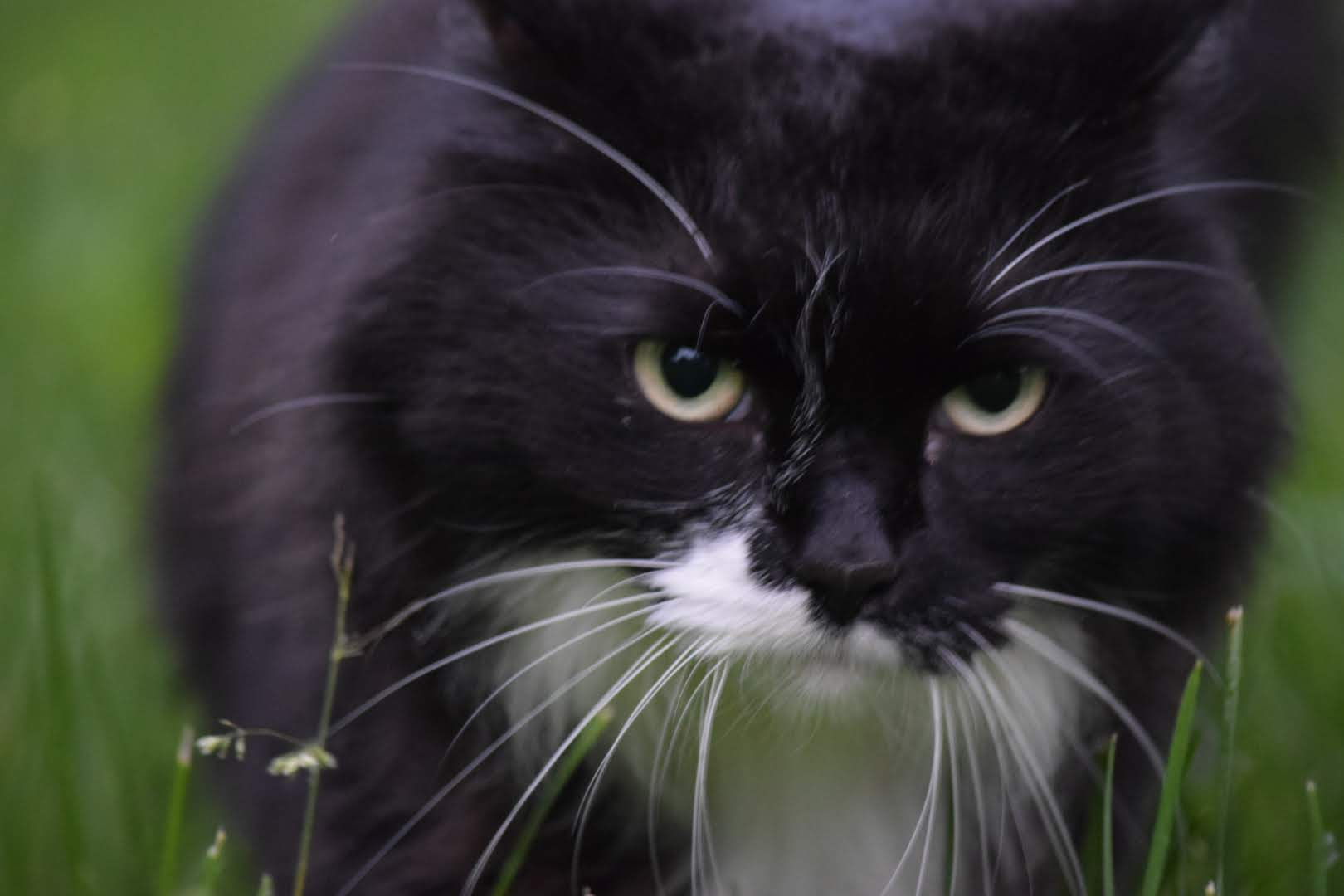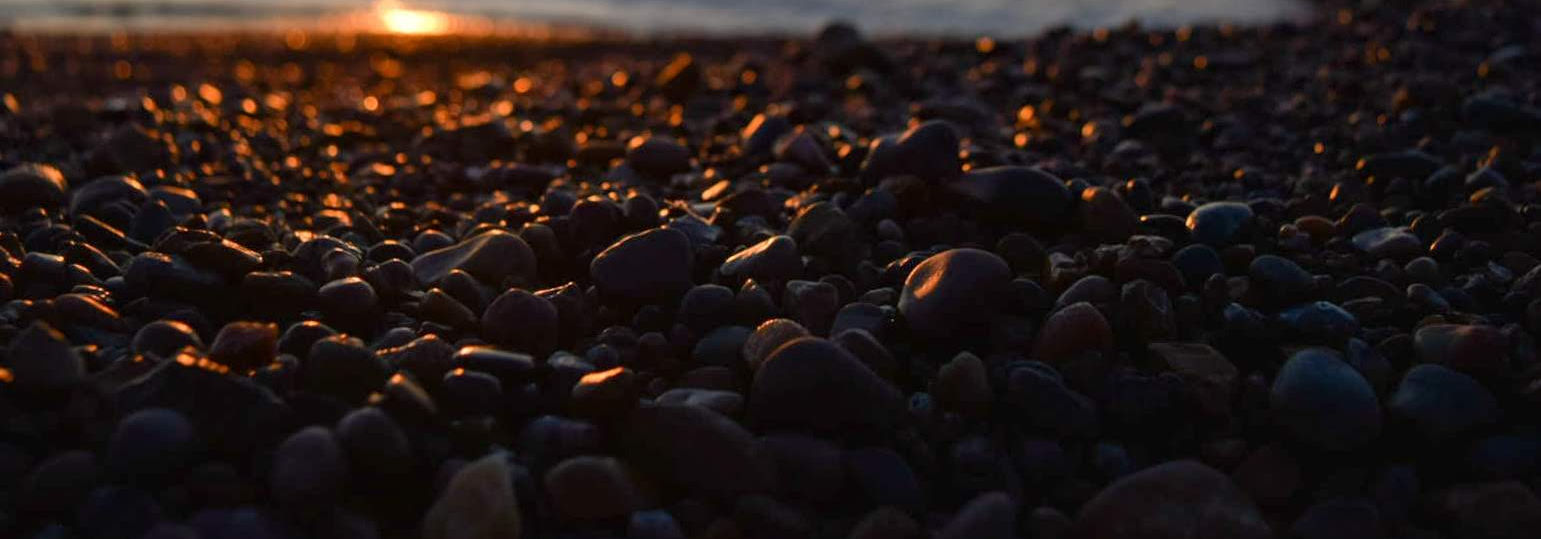I wrote this poem as part of a summer creative writing class at University of Detroit Mercy. The class was all online (due to COVID-19), and each meeting was an online video call — it was a great class. We were asked to do a response poem (you should be able to look up the inspiring poem, Horse), and I was asked to play with enjambment (line breaks). Here’s what I wrote.
Continue reading “Response poem (after Louise Glück’s Horse)”How did life begin?
How could life begin? And not just on Earth, but anywhere? It’s a big question – but one for which there is now a reasonable, and amazing, scientific answer. And with that answer, what does it all mean?
Around 2012, my mind was permanently blown, and my life changed, when I first read Richard Dawkins’ The Selfish Gene, and specifically, the second chapter entitled “The Replicators.”
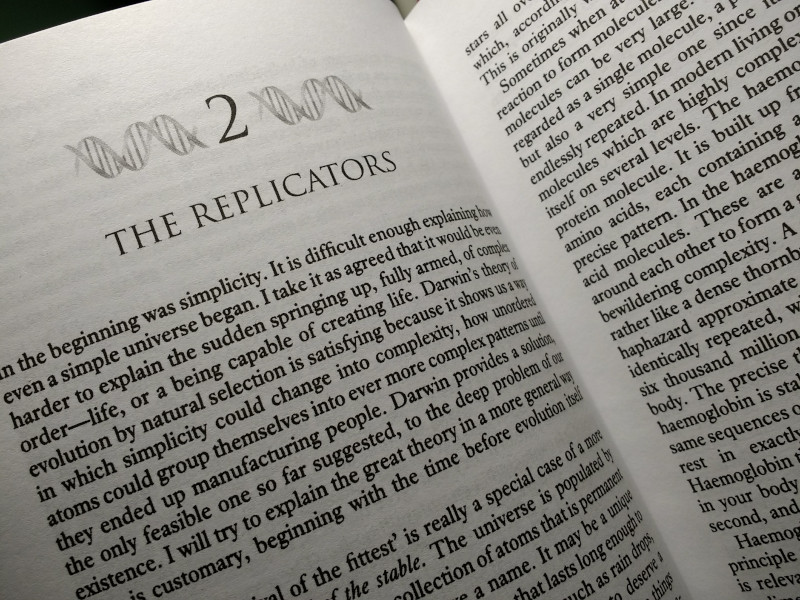
Dawkins’ term “replicator” refers to any entity in the universe of which copies are made. And in the case of the “primordial soup” of early Earth, something like the following is postulated. (If you get lost in the extended excerpt below, scroll further for a great video that explains the same thing.)
Sometimes when atoms meet they link up together in chemical reaction to form molecules, which may be more or less stable…
[B]efore the coming of life on earth, some rudimentary evolution of molecules could have occurred by ordinary processes of physics and chemistry…
If a group of atoms in the presence of energy falls into a stable pattern it will tend to stay that way. The earliest form of natural selection was simply a selection of stable forms and a rejection of unstable ones…
At some point a particularly remarkable molecule was formed by accident. We will call it the Replicator. It may not necessarily have been the biggest or the most complex molecule around, but it had the extraordinary property of being able to create copies of itself. This may seem a very unlikely sort of accident to happen. So it was. It was exceedingly improbable. In the lifetime of a man, things that are that improbable can be treated for practical purposes as impossible… But in our human estimates of what is probable and what is not, we are not used to dealing in hundreds of millions of years…
Actually a molecule that makes copies of itself is not as difficult to imagine as it seems at first, and it only had to arise once. Think of the replicator as a mould or template. Imagine it as a large molecule consisting of a complex chain of various sorts of building block molecules.
The small building blocks were abundantly available in the soup surrounding the replicator. Now suppose that each building block has an affinity for its own kind. Then whenever a building block from out in the soup lands up next to a part of the replicator for which it has an affinity, it will tend to stick there. The building blocks that attach themselves in this way will automatically be arranged in a sequence that mimics that of the replicator itself. It is easy then to think of them joining up to form a stable chain just as in the formation of the original replicator. This process could continue as a progressive stacking up, layer upon layer.
This is how crystals are formed. On the other hand, the two chains might split apart, in which case we have two replicators, each of which can go on to make further copies.
A more complex possibility is that each building block has affinity not for its own kind, but reciprocally for one particular other kind.
Then the replicator would act as a template not for an identical copy, but for a kind of ‘negative’, which would in its turn re-make an exact copy of the original positive. For our purposes it does not matter whether the original replication process was positive-negative or positive-positive, though it is worth remarking that the modern equivalents of the first replicator, the DNA molecules, use positive-negative replication. What does matter is that suddenly a new kind of ‘stability’ came into the world.
Excerpt from The Selfish Gene by Richard Dawkins (1976). Specifically from chapter 2, “The Replicators”
A good video explaining a similar take on the replication process (in particular, what Dawkins calls a postive-negative process) was produced by Jon Perry, based on the so-called RNA World hypothesis.
By all accounts, there remain questions about the details of that earliest replication process that started in Earth’s primordial soup, and how it shifted from a chemical process into a biological or life process, but the general concept is widely accepted. (For more, look into recent research at Georgia Tech on the idea that that life arose from the co-evolution of proteins and RNA.)
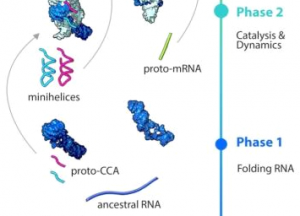
The overall point is, anywhere in the universe, it’s possible – and many think likely – that by the laws of physics and the natural tendency of stable systems to persist, amalgamations of molecules came together (if only through billions of years of chance) into something that replicated itself, and that this began the process of evolution.
There’s no reason to believe this natural process would only have happened once, or only on Earth.
So where does this leave us in terms of the meaning of life? What does it mean spiritually if the beginning of life was indeed a random clicking together of atoms and molecules based only on the laws of physics and chemistry?
To me, the answer revealed by the Replicator is that the meaning and purpose of life is anything we want it to be. I take comfort in the fact that most people in the world choose a meaning of life centered on compassion and love.
Let’s start with a cat

It might seem silly to start this blog with a post about my cat. But I’d argue that for thousands of years, cats have been at the forefront of communication technology and storytelling. Some examples:
Lions were immortalized in cave art and sculpture over 30,000 years ago. (That’s 20,000 years before human agriculture started.)
In addition to art, of course, stories involving cats have been passed from time immemorial. The ancient traditions of many cultures feature lions, in particular, as symbols of greatest power.
Hercules‘ first labor was to take on the Nemean lion.
Kings, heroes, and God himself are often described like lions in the Bible. And who can forget Daniel in the lions’ den?
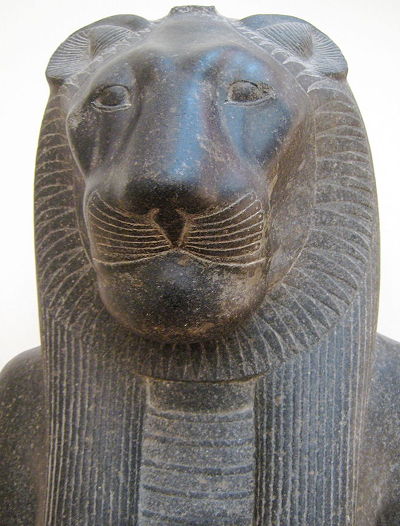
The fearsome lioness goddess Sekhmet (whose very name means Powerful One) was central to the Egyptian pantheon, and one of its earliest and most warlike members. Check out her nicknames: “The One Before Whom Evil Trembles”, “Mistress of Dread”, “Lady of Slaughter”, and “She Who Mauls”. Another reason she was a big deal was she saved the people of Egypt by drinking the blood-red waters of the Nile during its annual floods (possibly making her the original vampire).
The origin of Asian lion dancing is traced back to old folk tales (which in turn are often based on historical events). And how’s this for using cats as a communication media: During the Qing dynasty, Ming rebels passed secret messages during lion dance performances – specifically when the huge costume lion ate and spat out a head of cabbage.
What’s a more fundamental item of communication than one’s name? The tens of millions of people named “Singh“ (one of the world’s most common surnames) probably know their name means “lion”. The name derives from the Sanskrit word for lion (सिंह siṃha). You might notice the similarity between that and the Swahili word simba, which also means lion, and for millions, The Lion King. For me, Simba means Kimba the White Lion, the unacknowledged cartoon series of which The Lion King was a remake. (Sorry for that little rant!)

1960s Kimba the White Lion jigsaw puzzle with Mufasa – I mean, Leo in the center.
The Hittites in what is today Turkey carved statues of lions at least 3,000 years ago to notify people of important information such as the boundaries of a king’s territory and the location of fresh water.

The depiction of cats in art took a distinct downturn during the Middle Ages. As we all know, cats in Medieval painting were often horrifyingly ugly. (View at your peril!)
Of course, cats are common in publishing. – Tigers have been featured in picture books for a couple hundred years. And does anyone deny that one of the most important cats in the history of publishing is Dr. Seuss’ The Cat in the Hat? It’s one of the top 10 best-selling children’s books of all time. (Admittedly, the Cat is beaten out by a puppy, two rabbits, and an elephant.)
By far, the most popular character in the early days of theatrical cartoons was Felix the Cat, whose antics overcame the limit of silent films. It is beyond dispute that most of the next generation of cartoon characters, including Mickey Mouse, were slightly-changed copies of Felix.

Felix went from the start of one world-changing communications medium to the dawn of the next. Starting in 1928, during the early development of TV, a figurine of Felix the Cat was used in demonstrations and experiments put on by RCA and a radio network called NBC.
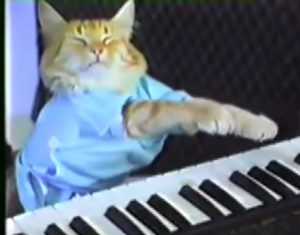
From prehistoric carvings and cave paintings, through publishing, film, and TV, cats have continued to be at the forefront in the advent of the latest evolution of human communications with the Internet, where cat memes and cat videos have become a hallmark of being online.
So given all that, here’s a picture of my cat.
